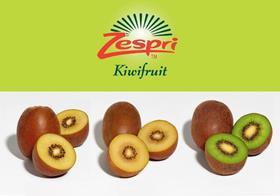
Ask any kiwifruit marketer around the world and they’ll tell you there is always a great deal to learn with the introduction of any new variety.
That has definitely the been the case this year for New Zealand kiwifruit marketer Zespri, which has been putting its new varieties through their paces in markets around the world.
The company has been running trials again this season for its G3 early gold, G9 long storing gold, and G14 sweet green varieties, which it began commercialising last year. The trials have been particularly focused on how best to manage the different varieties through the supply chain, Zespri CEO Lain Jager explained to Fruitnet.com.
“Whenever you do things with new varieties you learn every year,” he said.
Apart from the latest year of work in Asia, the new varieties have also seen their first season of trials in the European market.
Mr Jager explained the trials hadn’t turned up any significant surprises, but Zespri was still ironing out the best handling practices for the new varieties.
“We’ve had an issue with shrivel on the G9, so that’s something we’re doing trial work on,” he said. “The issue is that the G9 skin is quite permeable, so it loses moisture. We’re trying out different curing options, and the early results are promising.”
The G14 sweet green variety is more variable throughout the supply chain than Hayward, detailed Mr Jager, and Zespri is still learning how to manage that variability properly.
G3, however, has had great results in the market, and is storing particularly well.
Zespri’s up and coming red-fleshed varieties are also going through trials, albeit at an earlier pre-commercialisation stage.
This year has been the first season enough volume has come off the trial blocks to run storage and consumer tests, ahead of a planned commercialisation decision in June 2012.
“The red varieties are looking really promising from a consumer perspective,” Mr Jager told Fruitnet.com.
“The thing about red varieties that’s always important is whether the storage is there. We know the yield is there and size is there, now we’re jumping the storage hurdle. We need another year of data for that.”



